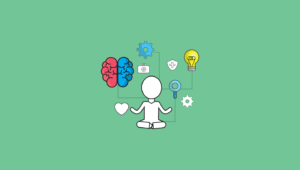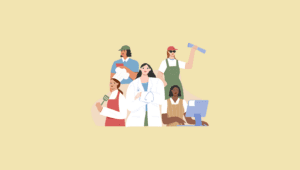Teepa Snow, one of WayWiser’s Trusted Advisors, is passionate about educating people on what dementia is, and also what it’s not. This includes exploring brain changes.
She’s devoted her life to raising awareness about this often misunderstood condition, and is driven to promote quality of life for those with dementia, and for their loved ones and caregivers.
Because Teepa recognizes—dementia doesn’t only impact the life of the person who has it. It also deeply affects the lives of their families and loved ones.
If you have a loved one who you suspect or know to be experiencing dementia, educating yourself about this condition is a crucial step in effectively navigating it.
Thankfully, Teepa has helpful information and tips for those dealing with this complex issue.
If you haven’t yet watched or read Teepa’s Dementia 101 article, you can find that here.
In her 15-minute video “Meaningful Activities,” dementia educator Teepa Snow explains the types of activities that all of us need for a meaningful life. This ties into the concept of creating enriching activities for those living with dementia, but it also applies to creating meaningful activities for caregivers.
Categories of Meaningful Activities

The first of four categories for creating a meaningful life is feeling productive and valued, Snow says.
A person may feel productive and valued because they receive a “thank you” or because they get paid for their efforts. In either case, we all like to feel like we’re making a difference for others. “It’s part of what makes us feel like human beings and that I’m here for a reason,” she explains.
The next category is leisure activities, or things you do because they are fun.
You likely will not gain anything financial or feedback-wise from these activities, but they bring you pleasure. Some of these activities are done passively, while others are done actively. For instance, it’s the difference between watching a game of cards or playing a game of cards. Your leisure activities may include a mix of passive and active ones.
The third category is taking care of your body, brain, business, and the place you live, Snow says.
This category includes a wide range of activities, including:
- Grooming
- Toileting
- Exercising
- Thinking
- Shopping
- Managing your money
- Planning how to get to places via transportation (such as reading a bus schedule or figuring out how to transfer to a different airplane at the airport)
There are many examples that fit into this third category.
The fourth category is rest and restoration, and this category is often underappreciated.
Basically, it’s recharging your batteries. “Often we think of sleep for this one, but there are other things we do for restoration,” Snow says. The things you do for rest and restoration are highly dependent on how you get your energy back. Some people like to go off by themselves, while others like to spend time with people. This is what you may have heard about when describing someone who is an introvert versus an extrovert.
Snow then shared how these categories apply to activities for those living with dementia. “Meaningful activities for dementia need to be balanced,” Snow says. “Remember that people need to feel valued and productive. There is more to restoration than sleep. Not all leisure should be passive. And taking care of my brain, body, and myself should match my abilities.” Basically, you want to create the right support and care where the person you are caring for can shine.
Meaningful Activities in Action
To help demonstrate the concept of meaningful activities for a meaningful life in action, Snow’s video then gives a real-life demonstration where she describes some of the activities in her narration.

The first activity is a cooking group demonstration with four people at the counter led by a facilitator. Each person has a packaged blueberry muffin mix and milk. The facilitator says that participants should open their mix and put it in the bowl. When one person has trouble doing this, the facilitator blames the bag, not the person. “That bag, it’s such a problem,” she says.
One person isn’t quite clear on what she should do, so she looks around to see what others are doing. This is one advantage of having a small group, so participants can learn from each other, Snow explains.
During the cooking demonstration, the participants feel productive as they have a job to do (making the muffins), and they are using physical movement to get things done. “People are using their hands and eyes to accomplish a task, and they are doing something of value,” Snow says. During the process, they have lots of positive reinforcement. The facilitator also occasionally asks for help with an additional task, such as putting paper muffin containers in the muffin pan.
The facilitator also asks participants what their favorite part is, cooking or eating. One participant says “cooking,” which Snow points out may make her more motivated to eat what she made. If she just received the food without cooking involved, she may be less likely to eat.

The next part of the video shows Snow feeding chili to a woman. Snow is holding the woman’s arm in a way that gives support to her elbow and also involves bringing the woman’s hand as well as Snow’s hand up to her mouth. This approach can better facilitate eating, which the woman does well with Snow’s help. The woman’s caregiver is surprised and enthusiastic about the results.
The last part of the video shows three women putting together cut-up pictures of flowers that are made into puzzles (she found the pictures and made them larger, then applied them to thicker cardstock paper). Snow tells video viewers that she used pictures of flowers because they have bright colors with clear shapes. Each participant has a different picture puzzle. Snow lets them know that she put the puzzles together and she thinks there is a missing piece. She says perhaps the women can help her find that missing piece.

During the activity, the women are using hand-eye skills and trying to figure out how things go together. When one of the women needs help, Snow taps on a specific area of the table to give her a clue, but she doesn’t move the puzzle piece for her. This helps the woman doing the puzzle stay in control.
Snow also uses a lot of positive reinforcement, saying that they must have done puzzles before. One woman also shares that she did puzzles when she was younger as she didn’t have crayons or anything else. Snow gives them yet more compliments for completing their puzzles.
Further Reading

Dementia 101: Teepa Snow Explores Important Facts to Know About This Complex Issue
Dementia: Teepa Snow Explores Challenging Behaviors
Dementia: Teepa Snow Explores Brain Changes
Dementia: Teepa Snow Shares Advice on Connecting Through Music
For more lessons from Teepa, take a look at all that she offers on her website.







